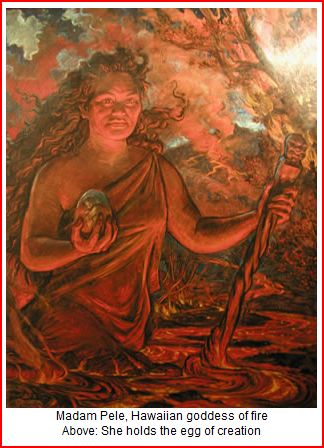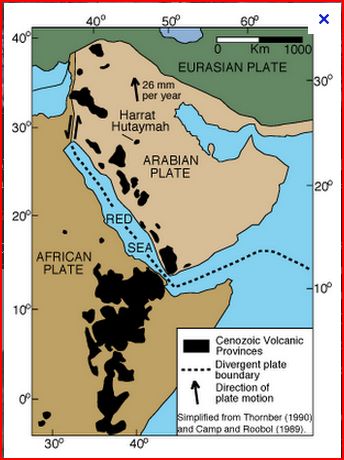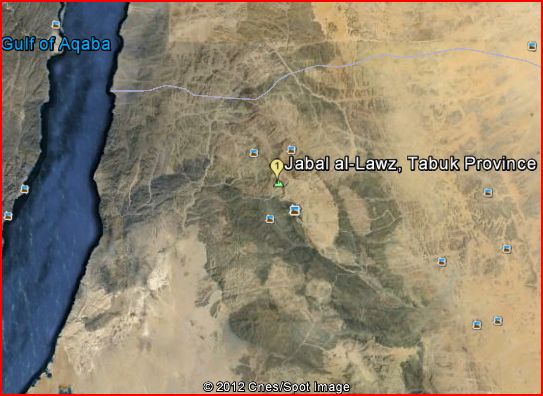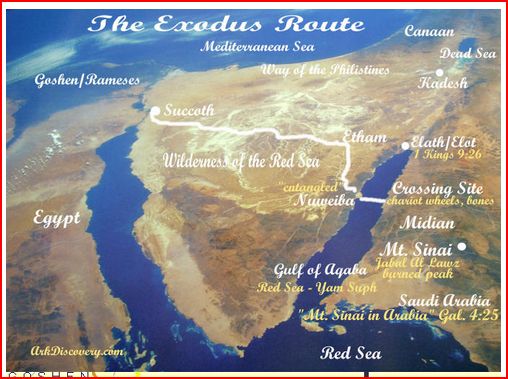It looks like you're using an Ad Blocker.
Please white-list or disable AboveTopSecret.com in your ad-blocking tool.
Thank you.
Some features of ATS will be disabled while you continue to use an ad-blocker.
share:
reply to post by TheFogHorn
Pointing out your more than likely desire for greed means that I secretly want fame and fortune?! That makes absolutely no sense. I'm not the one here hawking a blog site and coming up with alternate religious theories. Stop projecting. Only makes you look more guilty
Pointing out your more than likely desire for greed means that I secretly want fame and fortune?! That makes absolutely no sense. I'm not the one here hawking a blog site and coming up with alternate religious theories. Stop projecting. Only makes you look more guilty
Originally posted by shaluach
reply to post by TheFogHorn
Pointing out your more than likely desire for greed means that I secretly want fame and fortune?! That makes absolutely no sense. I'm not the one here hawking a blog site and coming up with alternate religious theories. Stop projecting. Only makes you look more guilty
'Projecting' is the making of accusations of another when the accuser is the guilty party.
YOU accused me. Let's make that perfectly clear.
I'm just making the effort at GREAT personal and financial cost. How have I benefited in the last year? Only in knowing I'm doing my best and that is all I can ask but I do hope for more, I must confess. I hope my daughter grows up in a world in which women do not wear burkas, where human beings treat each other as equals and the battle for religious global control is studied as a historical pehnomenon only. Yes, you are right....I have an ulterior motive.
reply to post by shaluach
Why don't you attack the theory and not the poster? Because you are unable to have a discussion/debate of these issues, you assign greed and pride to the OP to distract and derail the OP's thread. Typical Christian modus of operation.
The OP has done a lot of research and put in a lot of admirable work to bring this information to ATS. Many people link their blogs and other people's blog, to add to their posts here. There's nothing wrong with that.. There is something wrong with attacking people who present their work for others to discuss.
Personally, I don't know why there would be any argument that primitive people assigned volcanic attributes to a deity. It has happened all over the world. There is ample evidence of volcanic worship in the Bible.

Why don't you attack the theory and not the poster? Because you are unable to have a discussion/debate of these issues, you assign greed and pride to the OP to distract and derail the OP's thread. Typical Christian modus of operation.
The OP has done a lot of research and put in a lot of admirable work to bring this information to ATS. Many people link their blogs and other people's blog, to add to their posts here. There's nothing wrong with that.. There is something wrong with attacking people who present their work for others to discuss.
Personally, I don't know why there would be any argument that primitive people assigned volcanic attributes to a deity. It has happened all over the world. There is ample evidence of volcanic worship in the Bible.

Originally posted by shaluach
reply to post by TheFogHorn
Pointing out your more than likely desire for greed means that I secretly want fame and fortune?! That makes absolutely no sense. I'm not the one here hawking a blog site and coming up with alternate religious theories. Stop projecting. Only makes you look more guilty
Talk of the theme and speak to dismiss the theme or support the theme.
Hitting on the person violates the ATS rules.
reply to post by TheFogHorn
Well, you do have supporters in here, and I am one. Religions believe in myths and legends, and label everything they do understand as evil and bad. To address your OP, the real Creators are unknown, and will remain that way until each one of us wakes up to who, and what we all are.
Well, you do have supporters in here, and I am one. Religions believe in myths and legends, and label everything they do understand as evil and bad. To address your OP, the real Creators are unknown, and will remain that way until each one of us wakes up to who, and what we all are.
reply to post by TheFogHorn
Yep I also think that the Hebrews more intellectualised version post Exodus was probably heavily influenced by Egyptian thinking.
Cool that would make a great show!
Yep I also think that the Hebrews more intellectualised version post Exodus was probably heavily influenced by Egyptian thinking.
Originally posted by shaluach
reply to post by TheFogHorn
Next thing you know you'll be hosting a show called "Volcano gods" on the History Channel or some crap like the Ancient Aliens dude Giorgios Tsoukalis.
Cool that would make a great show!
reply to post by TheFogHorn
Alright so this is the place i was talking about....
These guys apparently got around the fences and climbed to the top of Mt. Sinai... They say specifically the rock at the top was not Volcanic... Skip straight to 17:00...
Im with you on the volcanos in the area thing... but IF this is the right mountian... its not volcanic as far as i've seen.
Great video By the way...
Alright so this is the place i was talking about....
These guys apparently got around the fences and climbed to the top of Mt. Sinai... They say specifically the rock at the top was not Volcanic... Skip straight to 17:00...
Im with you on the volcanos in the area thing... but IF this is the right mountian... its not volcanic as far as i've seen.
Great video By the way...
edit on 1-7-2012 by Akragon because: (no reason given)
reply to post by Akragon
Here's a chart of the volcanic regions in the area. The big black spot, just to the left of Harrat Hutaymah is right where Jabal al Lawz is. Jabal al Lawz definitely had a superior view of Hutaymah when it was going off.
volcano.oregonstate.edu...

Here is a picture I snipped from Google Earth of Jabal al Lawz, you can see the lava fields from space.

Here too, you can see the lava fields, right where the supposed Mt. Sinai is.

Here's a chart of the volcanic regions in the area. The big black spot, just to the left of Harrat Hutaymah is right where Jabal al Lawz is. Jabal al Lawz definitely had a superior view of Hutaymah when it was going off.
Harrat Hutaymah is less than 2 million years old, making it one of the youngest volcanic fields in Saudi Arabia. It is also one of the most distant volcanic fields from the Red Sea. The volcanic deposits cover 350 square miles (900 square km) in an area scattered over 950 square miles (2,500 square km). However, Harrat Hutaymah is relatively small compared to other harrats in Saudi Arabia. Xenoliths from the mantle are unusually common at Harrat Hutaymah.
volcano.oregonstate.edu...

Here is a picture I snipped from Google Earth of Jabal al Lawz, you can see the lava fields from space.

Here too, you can see the lava fields, right where the supposed Mt. Sinai is.

“According to Exodus 19 … Mount Sinai blazed with fire, was enveloped by a huge plume of cloud or smoke and shook violently as in an earthquake.
Flashes of lightning and sounds like trumpet blasts also occurred. The description fits a a volcanic eruption. The emission of hot gases from fissures
can produce trumpet-like sounds, and observers have reported seeing massive electrical displays emanating from volcanic clouds. No volcanoes are known
to have erupted during that period in the Sinai Peninsula, but Arabia has many volcanoes. One volcanic mountain in the western Arabian Peninsula, Hala
al Bedr (Mount Bedr), is according to this theory a particularly promising candidate for ancient Mount Sinai.”
NIV Archeological Study Bible, p. 123.
Our options for the Mt Sinai site are open. Our option for the type of mountain are not
Thanks for the gentlemanly support
NIV Archeological Study Bible, p. 123.
Our options for the Mt Sinai site are open. Our option for the type of mountain are not
Thanks for the gentlemanly support
Moses Mtn is fire and smoke, and an oil field in Saudi Arabia intersects the Midian area.
Ever seen a refinery catch on fire or a ship loaded with crude-------lots of smoke and fire.
Moses Mtn was the first refinery----as in underground tectonic plate heat oil deposits.
Same things make the asphalt blocks on the bottom of Dead Sea.
Moses Mtn was not a standard volcano, but one that involved underground oil issues.
Ever seen a refinery catch on fire or a ship loaded with crude-------lots of smoke and fire.
Moses Mtn was the first refinery----as in underground tectonic plate heat oil deposits.
Same things make the asphalt blocks on the bottom of Dead Sea.
Moses Mtn was not a standard volcano, but one that involved underground oil issues.
edit on 1-7-2012 by MagnumOpus because: Moses Mtn
Originally posted by MagnumOpus
Moses Mtn is fire and smoke, and the oil fields in Saudi Arabia interest the Midian area.
Ever seen a refinery catch on fire or a ship loaded with crude-------lots of smoke and fire.
Moses Mtn was the first refinery----as in underground tectonic plate heat with oil deposits.
Same things make the asphalt blocks on the bottom of Dead Sea.
Moses Mtn was not a standard volcano.
Would this type of volcanic event make the mountain 'quake'? Mt Sinai was said to rumble and quake and make a loud trumpet noise. That doesn't seem to fit a burning oil lamp type mountain.
Originally posted by TheFogHorn
Would this type of volcanic event make the mountain 'quake'? Mt Sinai was said to rumble and quake and make a loud trumpet noise. That doesn't seem to fit a burning oil lamp type mountain.
Yes, these type things happen even today. Just in Moses time it was ripping into an oil area making lots of volatile gases.
www.ouramazingplanet.com...
A swarm of thousands of earthquakes that struck the corner of Saudi Arabia nearest to Egypt in 2009 helped reveal that the area is unexpectedly volcanically active, scientists now report.
-----
Still, "the Red Sea rift is a very active place to start with, with a chain of volcanoes down the middle of it that we're rarely aware of because they are underwater," said researcher John Pallister, a volcanologist and chief of the U.S. Geological Survey's volcano disaster assistance program. "When continents are being pulled apart as you have there, you'll often see intrusions of magma on the shoulders of the rift."
-------
Volcanic quakes often generate a mix of high- and low-frequency seismic waves that could yield clues as to when an eruption might occur. These signals are often dulled by the nature of the earth they pass through, but when it came to the Arabian quakes, they were detected through the crystalline rocks of the area quite clearly. The low-frequency seismic waves detected during the quakes seemed to show magma flowing under the earth, while the high-frequency waves indicated fracturing of crystalline rocks as magma crept toward the surface.
One can imagine what happens when either magma or heat moves into oil areas and cooks off volatile hydrocarbons along with the low rumbles.
mannaismayaadventure.com...
Between April and June 2009, a swarm of more than 30,000 earthquakes struck this region. Although most of the quakes had very low magnitudes, 19 reached magnitude 4 or greater and a 5.4-magnitude quake damaged buildings in a nearby town.
Most of those dark areas that show up on the satellite photos are old basalt flows and there is some close to Moses Mtn.
edit on 1-7-2012 by MagnumOpus because: When Rift Zones intersect oil deposits
new topics
-
Results of the use of the Oreshnik missile system in Dnepropetrovsk
World War Three: 1 hours ago -
Nigel Farage now the Most Favoured UK Politician
Regional Politics: 2 hours ago -
Little Johnny and Larry should team up
General Chit Chat: 9 hours ago -
Will Us use alien technology to fight in ww3?
World War Three: 9 hours ago
top topics
-
Little Johnny and Larry should team up
General Chit Chat: 9 hours ago, 6 flags -
Shane Gillis commercial
Jokes, Puns, & Pranks: 15 hours ago, 4 flags -
Results of the use of the Oreshnik missile system in Dnepropetrovsk
World War Three: 1 hours ago, 2 flags -
Will Us use alien technology to fight in ww3?
World War Three: 9 hours ago, 1 flags -
Nigel Farage now the Most Favoured UK Politician
Regional Politics: 2 hours ago, 1 flags
active topics
-
Results of the use of the Oreshnik missile system in Dnepropetrovsk
World War Three • 20 • : CriticalStinker -
Well we know Putins ICBMs won't fail in their silos
World War Three • 182 • : Lazy88 -
Let's start a conspiracy
General Conspiracies • 7 • : mysterioustranger -
President-Elect TRUMP Picks Former Florida A.G. PAM BONDI to be U.S. Attorney General.
2024 Elections • 45 • : Xtrozero -
Little Johnny and Larry should team up
General Chit Chat • 1 • : mysterioustranger -
Shane Gillis commercial
Jokes, Puns, & Pranks • 1 • : Macenroe82 -
Gaetz withdraws from attorney general consideration
US Political Madness • 26 • : BernnieJGato -
Nigel Farage now the Most Favoured UK Politician
Regional Politics • 5 • : gortex -
Jaguar Rebrand Video Causes "WTF?" Moment - Seriously Weird
Automotive Discussion • 22 • : JAY1980 -
Will Us use alien technology to fight in ww3?
World War Three • 10 • : andy06shake
